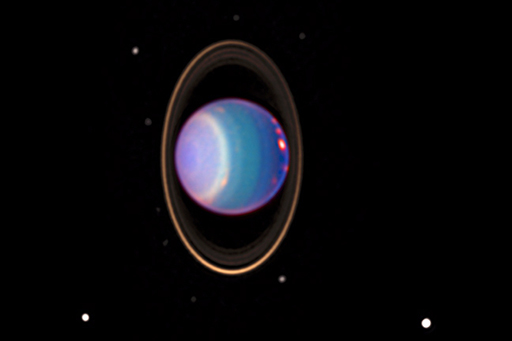2.7 Rings around planets
Tidal forces acting on moons can also be destructive, ripping apart any moon that migrates inwards too close to its planet. As the moon strays closer, the gravitational pull of the planet attracts the near-side material much more than material on the far side of the moon, deforming the moon and creating tidal bulges on both the near side and the far side. Closer still and eventually the difference between the planet’s gravitational pull on the near- and far-sides of the moon overcomes the moon’s internal strength. The moon begins to be torn apart. The end result is the disintegration of the moon, leaving behind only small particles of debris floating around the planet where the moon once orbited, forming rings like those seen today around Jupiter, Saturn, Uranus (Figure 30) and Neptune.

The distance at which such moon destruction by strong tidal forces occurs is known as the Roche limit and varies from planet to planet, depending upon the planet’s size and mass. Various small moons do exist among the debris in a planet’s rings.
